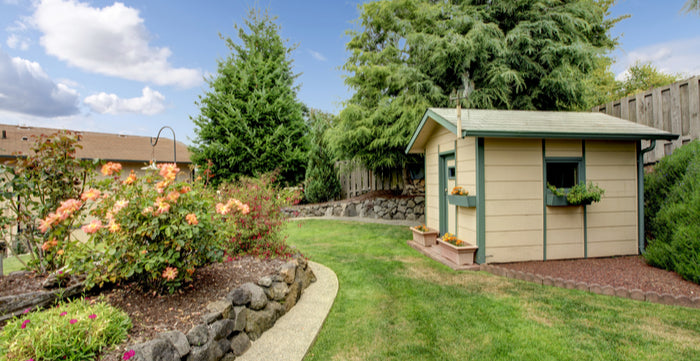
Maximum Shed Size Without Planning Permission - Crucial Things To Know
Date Published: September 16th, 2019
Some projects involving outdoor property renovation require planning permission from the local authority before you can carry them out. Most smaller changes like adding a shed in your backyard count as Permitted Development. This means that you do not need to get a permit from your Local Planning Authority in order to install a shed in your garden.
Planning permission usually relates to constructing outbuildings yourself. If you buy a new shed and the manufacturer delivers it and puts it on your lawn for you, this most likely doesn’t need a permit. However, there are some exceptions, so it depends on the size of the shed and the location of the shed on your property.
Storage sheds and hobby sheds count as Permitted Development structures, whereas sheds for residential use do not. If you are planning to install a shed in your yard, here are the crucial things you need to know about shed permits.
Do you need planning permission for a shed?
Having a shed in your garden is a great way to create more storage space without requiring planning permission. However, the shed must still meet building regulations in order to be legally constructed in your yard. This includes shed height restrictions and placement rules. The following allowances for building a shed without a permit apply to private houses only.
- Must be one storey high only
- Eave heights must not exceed 2.5m
- Overall height must not exceed 4m (dual pitched roof) or 3m (any other roof)
- Maximum height of 2.5m if the shed is within 2m of a dwelling boundary
- No raised platforms, verandas, or balconies
- The shed must not cover more than half of the area surrounding the house
- The shed must not be touching more than 15m of ground
- No sheds in front of walls which form the front of the house
- The shed must be for domestic use only
- No sleeping accommodations inside the shed
- You must not keep pigeons inside the shed
- The shed must be closer to the house than to a road or public highway
- The construction must not impinge on a Conservation Area
When do you need a permit to install a shed?
There are some circumstances when shed installation does require a permit. It is not just about the dimensions of the shed, but also about the location. If you fail to obtain planning permission and then build a shed there anyway, the local authority has the legal right to tear it down and remove your shed.
Even if you have a low-cost affordable shed, you wouldn’t want to waste money in a situation like that. Be sure to check that none of the regulations below apply to you and your shed before you try to go ahead as a Permitted Development.
Installing a Shed for Non-Domestic Purposes
Think about what you will use your shed for. Storage is fine, as is using the shed for a hobby space such as a crafting or tools workshop. If you intend to use your shed for business, such as a home office, or as a self-contained residential space, then you will need to get planning permission first.
To be a Permitted Development the shed must not have a toilet or sleeping accommodations. If you want to keep livestock in your shed, again this must be for domestic purposes only. If there will be a lot of people visiting the shed, you may need to get a permit.
Installing a Shed Near a Listed Building
A listed building is a structure which is deemed to be of national importance. The Secretary of State, Culture, Media, and Sport and Historic England determine which structures are of historic or architectural interest.
Legally, you must attain planning permission before you can build any outbuildings in the curtilage of a listed building (the area of land surrounding this structure). If you are not already aware, you can check whether a building is listed on the dedicated List of Buildings of Special Architectural or Historic Interest register online here.
Installing a Shed Attached to a Listed Building
Should you want to make the bold move of attaching a shed to a listed building, of course, this requires planning permission. However, it also requires obtaining listed building consent. The local planning authority can refuse your plans if they disagree with the changes that you want to make to the structure and how they could impact the qualities which put it on the list.
Installing a Shed on Designated Land
Separately from listed buildings, designated land also requires planning permission before you can build anything on it. Designated land is a term describing areas of interest such as World Heritage Sites, national parks, and Areas of Outstanding Natural Beauty. For these types of land, outbuildings like sheds must be no larger than 10m2.
This does not apply to conservation areas, though for all designated land you must get permission before building sheds to the side of property on designated land or within 20m of any walls of the house.